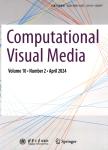Seamless and non-repetitive 4D texture variation synthesis and real-time rendering for measured optical material behavior
Seamless and non-repetitive 4D texture variation synthesis and real-time rendering for measured optical material behavior作者机构:Fraunhofer IGDDarmstadt64283Germany TU DarmstadtDarmstadt64289Germany TU GrazGraz8010Austria
出 版 物:《Computational Visual Media》 (计算可视媒体(英文版))
年 卷 期:2019年第5卷第2期
页 面:161-170页
核心收录:
学科分类:12[管理学] 1201[管理学-管理科学与工程(可授管理学、工学学位)] 08[工学] 0835[工学-软件工程] 0811[工学-控制科学与工程] 0812[工学-计算机科学与技术(可授工学、理学学位)]
基 金:partially supported by the European project MAXIMUS (No. FP7-ICT-2007-1-217039) the German Federal Ministry for Economic Affairs and Energy project Cult Lab3D (No. 01MT12022E)
主 题:optical material behavior reflectance modeling 4D texture synthesis texturing
摘 要:We show how to overcome the single weakness of an existing fully automatic system for acquisition of spatially varying optical material behavior of real object surfaces. While the expression of spatially varying material behavior with spherical dependence on incoming light as a 4D texture(an ABTF material model) allows flexible mapping onto arbitrary 3D geometry, with photo-realistic rendering and interaction in real time,this very method of texture-like representation exposes it to common problems of texturing, striking in two disadvantages. Firstly, non-seamless textures create visible artifacts at boundaries. Secondly, even a perfectly seamless texture causes repetition artifacts due to their organised placement in large numbers over a 3D surface. We have solved both problems through our novel texture synthesis method that generates a set of seamless texture variations randomly distributed over the surface at shading time. When compared to regular 2D textures, the inter-dimensional coherence of the 4D ABTF material model poses entirely new challenges to texture synthesis, which includes maintaining the consistency of material behavior throughout the 4D space spanned by the spatial image domain and the angular illumination hemisphere. In addition, we tackle the increased memory consumption caused by the numerous variations through a fitting scheme specifically designed to reconstruct the most prominent effects captured in the material model.



